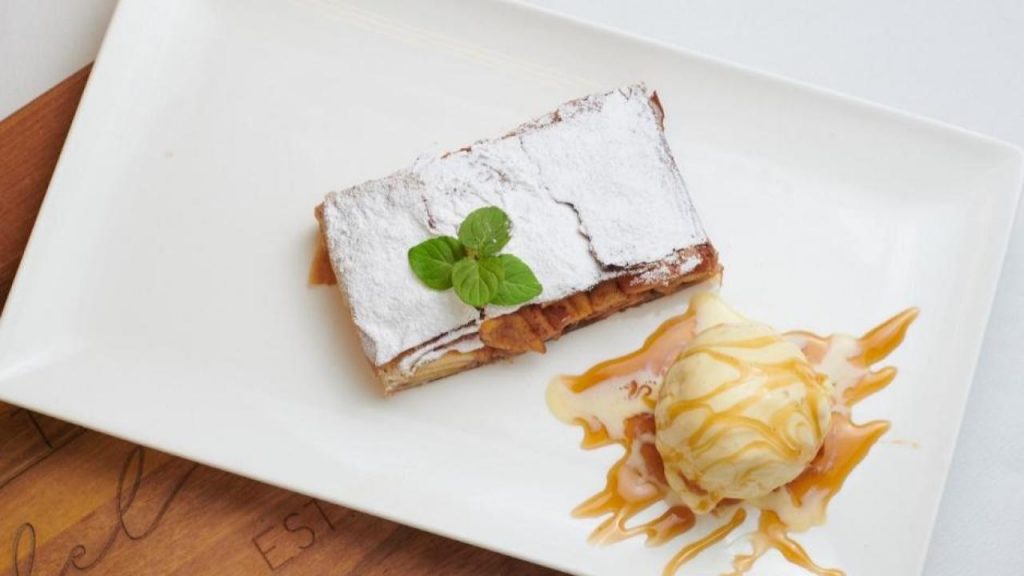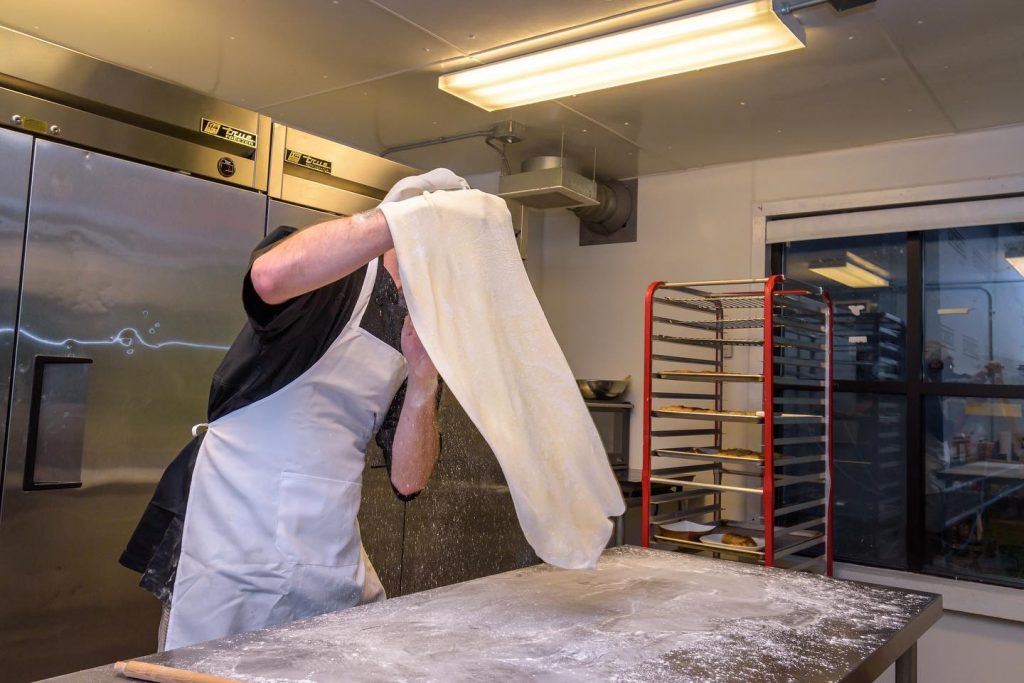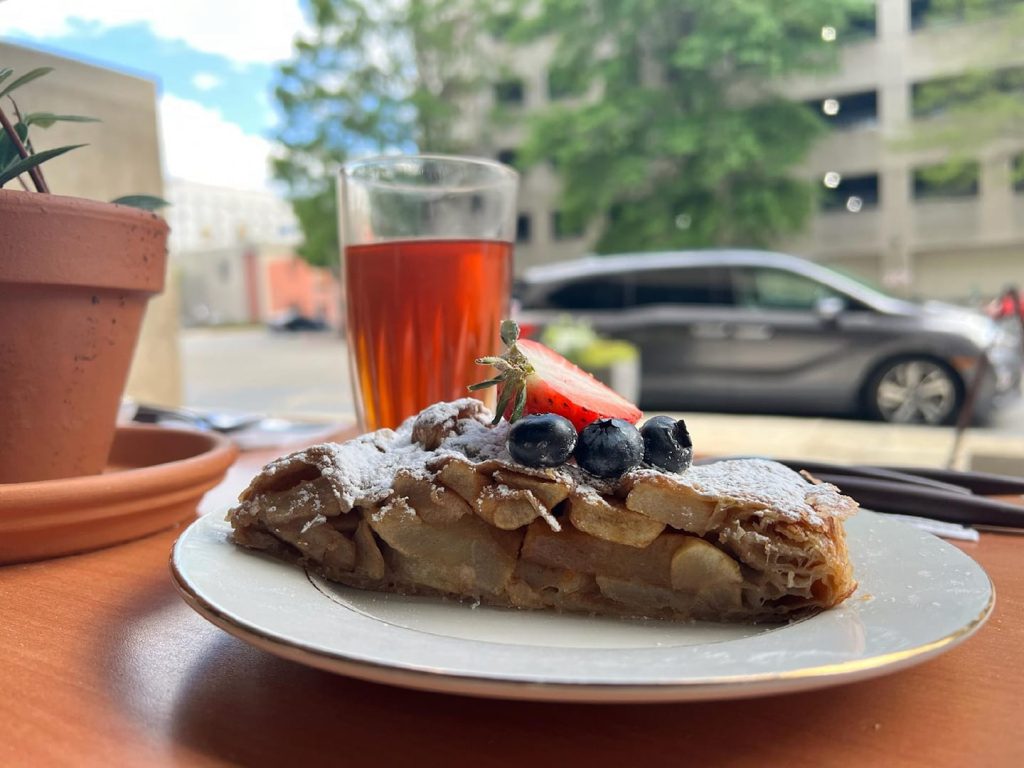
Ah, strudel—a tantalizing pastry with a rich history as delightful as its taste. This pastry, famed for its thin, flaky layers enveloping various sweet or savory fillings, has roots that stretch across centuries and continents. Its journey through time is a testament to the fusion of cultures, culinary innovations, and a passion for creating something truly delectable.
Origins: Tracing the Roots
The story of strudel begins centuries ago, likely in the Byzantine Empire. Its early iteration, known as “baklava,” consisted of thin layers of dough filled with nuts and sweetened with honey. This treat gradually traveled across the Mediterranean, eventually reaching the Middle East and Central Asia, where it evolved into a pastry known as “yufka.”
The concept of thin pastry layers traveled further westward, arriving in the kitchens of the Austro-Hungarian Empire, where it merged with local techniques and ingredients. This fusion laid the foundation for what we now know as the iconic Austrian strudel.
History of Strudel:
The Austrian Connection
The term “strudel” itself originates from the German word “strudel,” meaning “whirlpool” or “eddy.” This name is fitting, considering the swirling layers that characterize this pastry.
In the 17th century, the Austrian Habsburg Empire embraced strudel as a culinary treasure. Vienna, a hub of cultural exchange, became synonymous with this pastry. The Viennese perfected the technique of stretching the dough into an incredibly thin sheet. Even translucent. That became the hallmark of a well-made strudel.

The Art of Making Strudel
The key to a perfect strudel lies not just in its ingredients, but also in the art of stretching the dough. Traditional recipes call for a dough made from flour, water, and a touch of oil. It is meticulously hand-stretched until it’s paper-thin. This technique demands skill, patience, and a gentle touch to prevent tearing.
The dough is then generously spread with a filling—often a blend of apples, cinnamon, sugar, and breadcrumbs for the sweet version or combinations like spinach and cheese or meat for the savory variation. Once filled, the dough is carefully rolled, creating those iconic layers that will crisp and brown to perfection in the oven.
History of Strudel:
Spread and Adaptation
As the Austrian Empire expanded its influence, so did the fame of strudel. It traveled to neighboring regions, adopting new flavors and fillings along the way. In Hungary, for instance, the iconic “rétes” emerged—a cousin of strudel. It often features fillings like poppy seeds, cherries, or even cabbage and mushrooms.
The recipe continued to evolve as it journeyed across Europe. Each region added its own unique touch, contributing to the diversity of fillings and variations available today.

Modern Evolution
In the modern era, strudel has not lost its charm. It has adapted to contemporary tastes and preferences while still preserving its essence. Bakeries around the world offer a myriad of interpretations, from classic apple to innovative combinations like chocolate-hazelnut or even savory renditions with exotic ingredients.
Furthermore, with the rise of globalization, strudel has transcended borders. It is becoming a beloved pastry on menus worldwide. Whether served in a Viennese coffeehouse, a Hungarian pastry shop, or a trendy bakery in New York City, the allure of strudel remains irresistible.
The Legacy Lives On
In today’s culinary landscape, strudel stands as a symbol of heritage, innovation, and the beauty of cultural exchange. Its journey from the Byzantine Empire to the modern world showcases something special. It demonstrates how a simple yet intricate pastry can bridge cultures and bring joy to countless tables.
As we savor the delicate layers of this pastry, we may also relish in the layers of history and tradition that have shaped it. Strudel continues to be not just a dessert, but a testament to the craftsmanship and creativity of those who have contributed to its evolution.

Read more about apple strudel and strudel in general.
Visit The Strudel Shop
Taste History in the Making
Indulge in Decadence: Experience Gourmet Pastry Paradise!
Satisfy your cravings for luxury and flavor at The Strudel Shop. Step into a world where taste meets artistry. Enter a land where each bite is a symphony of exquisite flavors crafted to captivate your senses.
Discover the epitome of pastry perfection with our handcrafted delicacies. From delicate sweet strudels bursting with luscious fillings to impeccably layered cakes that redefine decadence. Our offerings promise an unparalleled sensory journey.
At The Strudel Shop, we blend tradition with innovation, sourcing only the finest ingredients to create an opulent array of pastries. Each creation is a testament to our commitment to culinary excellence. Everything is meticulously crafted by our skilled artisans who infuse passion into every masterpiece.
Indulge in an ambiance of sophistication as you explore our curated selection. Our shop is a haven for those who appreciate the finer things in life, where the aroma of freshly baked treats mingles with the elegance of our surroundings. Join us and immerse yourself in a sensory experience you’ll never forget.
Visit our store and take your dessert experience to new heights. Whether it’s for a moment of personal indulgence or a special celebration, let The Strudel Shop be your destination for unparalleled gastronomic delight.
Visit us in Columbia, SC today at 1237 Washington Street and embark on a journey of gourmet extravagance. Treat yourself to the extraordinary and discover the art of exquisite pastries at The Strudel Shop.
The Strudel Shop
Hours
Tuesday—Friday 8:00 AM to 3:00 PM
Saturday & Sunday 10:30 AM to 2:30 PM (brunch buffet)
Call us: 803.995.6127
menu
1237 Washington Street
Columbia, SC 29201